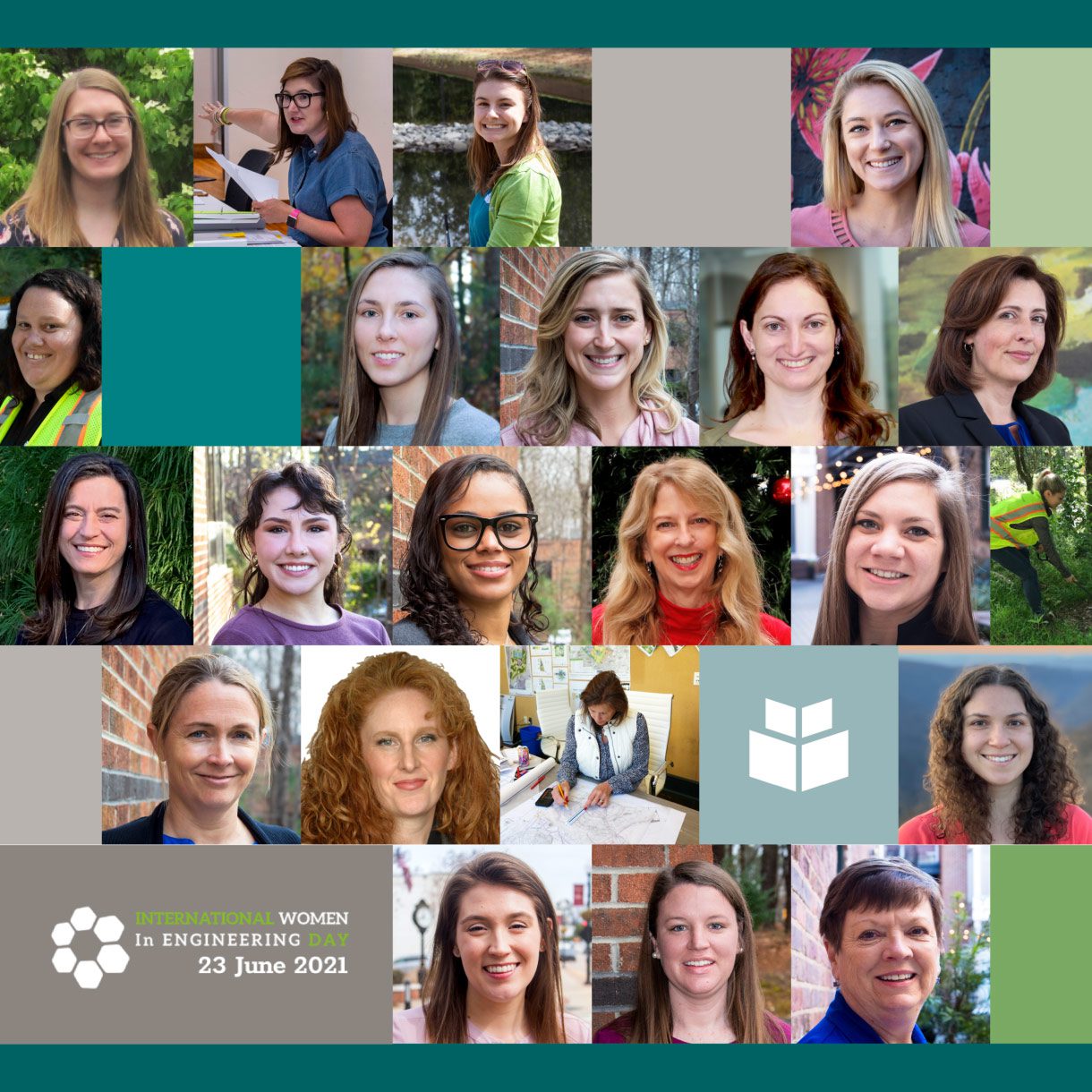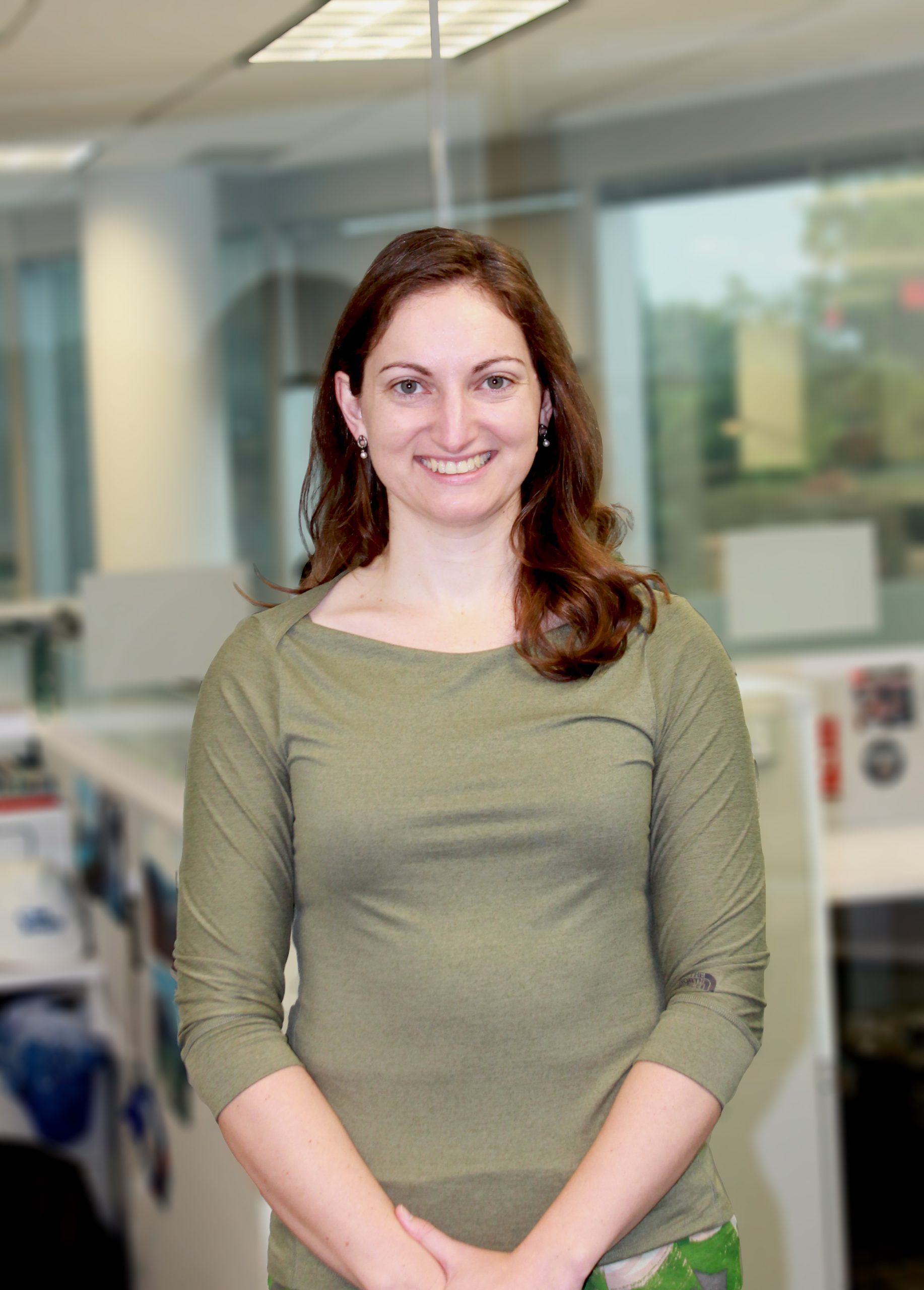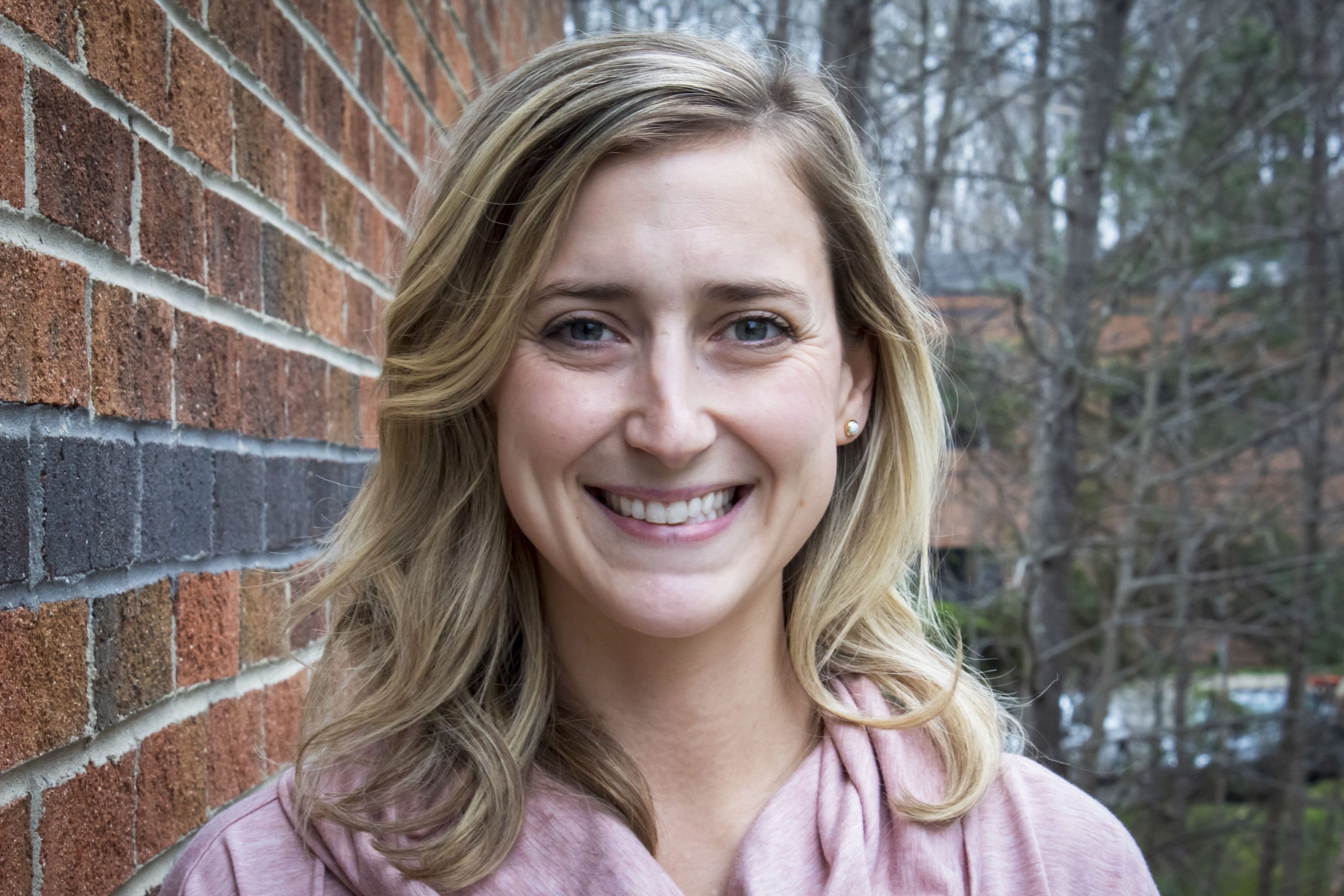
For WithersRavenel, International Women in Engineering Day (June 23, 2021) is a reminder of our commitment to ensuring increased opportunities for women as engineers and employees. It is also an occasion to celebrate our women engineers and professionals who contribute to every aspect of a project.
It has been an uneven path to progress since Edith Clarke became the first professionally employed female engineer in the United States after she was initially denied a chance to work as one.
In 2021, engineering continues to be a male-dominated field. But, on the brighter side, women engineers, particularly in the United States, are finding more opportunities.
To celebrate the day, we showcase the projects of three of our engineers.
Frances Gallagher, PE, Client Success Manager

About the project
I served as Project Manager for the design of a 3,800-foot section of the River Link Greenway for the Town of Cramerton. The project was federally funded and is a part of the Carolina Thread Trail. The project begins at Cramerton’s Lakewood Park and continues northerly along the South Fork Catawba River, where it connects to another phase of the trail after crossing under the US 29/74 bridge over the river.
What was unique about it?
The project included several challenging elements. The greenway crosses over two 50-foot Colonial Pipeline easements for 36-inch and 40-inch gas lines. Detailed coordination as well as special construction methods and materials were required to obtain an encroachment agreement from Colonial Pipeline.
The project also required much coordination with Duke Energy. The greenway crossed their easement for a large transmission line which required approval by Duke Energy Transmission. We also coordinate closely with Duke Energy due to the project’s location along the South Fork Catawba River, which is within a Federal Energy Regulatory Commission (FERC) Project Boundary. We obtained the electronic FERC Project Boundary data and designed the greenway to completely avoid the FERC boundary as well as avoid impacts to homes located along the river.
The project location along the river also meant that we had to minimize impacts to streams, wetlands and the FEMA floodway, and we did this by including beautiful sections of boardwalk.
What was the most challenging aspect of the work?
The most challenging aspect of the project was finding that perfect alignment that satisfied the regulatory and utility agencies, avoided impacts to the existing sewer line and adjacent residences, and minimized required clearing in the project corridor.
Did you have a mentor or role model on the job?
I didn’t have a mentor or role model on this project, but I did put to great use much of my experience serving as the Design Manager on the Program Management team for the Capital Projects Sales and Use Tax Program in York County, SC.
What did you learn/how did this project help you grow as an engineer?
This project reinforced for me how much I enjoy successfully delivering a project to our clients, which led me to my current role as Client Success Manager for municipal clients.
What was the most rewarding part of the project?
The most rewarding part of the project was walking the greenway after the construction was complete and having the client tell me how pleased they were with how smoothly the project had gone and that the project turned out beautifully.
Nina Caraway, PE, Senior Technical Specialist
About the project

This project is a hydraulic characterization for the City of Rocky Mount’s water distribution system. The City has a large and complicated water system, with three pressure zones, two different water treatment plants, and a collection of tanks, all of which behave differently depending on where they fall within the system. The City has observed concerning patterns with their water quality for service areas far away from their treatment plants, and they frequently implement operational measures to turn over or flush water in their system.
Before they invested in an expensive and permanent solution to maintain water quality, they sought the services of WithersRavenel. The City wanted to use their existing hydraulic model for insight, but upon inspection it became apparent this model was sorely out of date and did not reflect current system conditions. Therefore, we proposed building a new model based on best and most recent available data, which we termed a hydraulic characterization.”
What is your role on this project?
On paper, my role is hydraulic modeler. However, the term that best defines my role on this project is systems engineer. We have collected months of observed system data, compiled a physical inventory of applicable water infrastructure, and held investigative meetings with City staff to understand the mixture of hydraulic and human elements which drive their distribution system performance.
Did you have a mentor or role model on the job?
In this regard, Ken Orie proved an invaluable technical resource. His years of experience working on these types of projects has given him the ability to discern patterns in operational data and provide insight into why and how certain observations may occur.
For example, with the City of Rocky Mount pressure data we recorded, Ken was quick to point out the impact of wholesale customers, which are large water users on the edges of the system. These users can single-handedly change how operators manage high service and booster pumps depending on the duration, magnitude, and timing of when they pull water out of Rocky Mount’s system. In addition to these wholesale users, Pfizer Inc. has a major facility square in the middle of the pressure zone, which also tends to have water issues on its outskirts.
What is unique about the project and what is your takeaway from this project as an engineer?
Personally, this is the largest and most complicated hydraulic system I have developed and calibrated on my own. It is also a continuing effort our characterization raised even more questions than originally foreseen. One of the biggest puzzle pieces remaining for us and the City to solve is understanding the operational patterns of these large water users. If the impact of these users can be anticipated, then the City can optimize their own operations by minimizing flushing away water (and money) while maximizing their system’s level of service. And with their largest industrial client being Pfizer, having Rocky Mount as a client comes with the satisfaction of helping the health and safety of our nation.
Colleen Duryea, PE, Project Engineer
About the project

I was part of the WithersRavenel team for a 7-acre park project — called the Cary Downtown Park — for our client OJB Landscape Architecture.
What was your role?
I was involved as a Project Engineer on this project.
What was unique about it?
Yes, the project has many unique amenities (water feature, intricate play area, multiple buildings on site). These features required extra coordination with the design team.
What was the most challenging aspect of the work?
The grading was very unique because there was a decent amount of grade change. However, all the amenities needed to be flat for ADA. There were also tight corridors for utilities (1 foot in a structure placement would make a big difference!)
Did you have a mentor or role model on the job?
Ed Tang was the project manager, and he really led the project with plenty of background knowledge about Cary. He understood their processes really well. And he led the coordination with other consultants in all aspects of design.
What did you learn/how did this project help you grow as an engineer?
I learned a lot about coordinating with other consultants and how everyone comes in with a different perspective. My grading skills also improved a lot!
What was the most rewarding part of the project?
I love meeting people in the community who are excited to see the park being built and being able to tell them that I was part of the design team.
About International Women in Engineering Day
International Women in Engineering Day (INWED) is an international awareness campaign which raises the profile of women in engineering and focuses attention on the amazing career opportunities available to girls in this challenging and rewarding industry.
National Women in Engineering Day was launched in the United Kingdom on June 23, 2014; the event went international in 2017 due to the overwhelming enthusiasm from non-UK audiences. This is the seventh year of celebration for the outstanding achievements of women engineers throughout the world.
About the Women’s Engineering Society
The Women’s Engineering Society is a charity created by women who had worked in technical jobs during World War I and wanted to continue with this work after the war ended. Legislation prevented these women from keeping their engineering jobs, and cultural norms discouraged employers from hiring women for other technical roles. The pioneering and influential women of the time set up the Women’s Engineering Society, and have been working since that time to ensure equality for women in this non-traditional sector.
